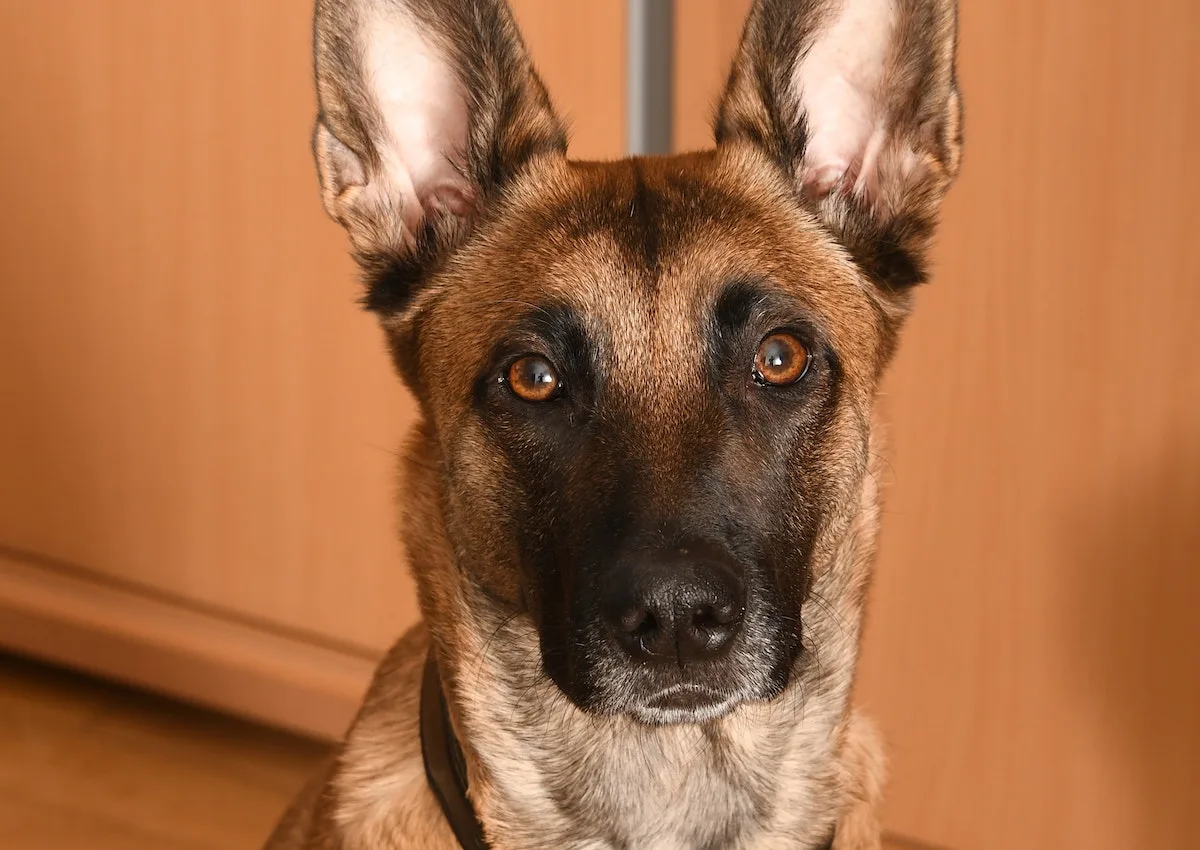The Belgian Malinois is a striking and versatile breed known for its exceptional working abilities. The Belgian Malinois coloring exhibits a sleekness and confidence that will grab anyone’s attention when in their presence.
The Belgian Malinois breed has a variety of colors and and coat variations, some of which are accepted by the AKC as breed standard as well as others that are non-AKC standard variations. We’ll explore some of them in this article.

What causes coat coloring?
Belgian Malinois coat genetics involve a complex interplay of various genes that determine coat color, pattern, and texture.
Here are some key genetic factors that contribute to the coat variations seen in the Belgian Malinois:
Agouti Signaling Protein (ASIP) Gene: This gene plays a crucial role in determining whether the coat will be solid (non-agouti) or have a pattern (agouti). Non-agouti dogs have a solid coat color, while agouti dogs display various patterns like sable or brindle.
Melanocortin 1 Receptor (MC1R) Gene: This gene influences the production of eumelanin (black/brown pigment) and pheomelanin (red/yellow pigment). Variations in this gene determine whether the coat color will be black, brown, or red/yellow.
Extension (E) Gene: This gene controls the distribution of black pigment (eumelanin) in the coat. The dominant allele (E) allows for the full expression of black, while the recessive allele (e) results in a diluted coat color, such as fawn or sable.
Brindle (KBr) and Dominant Black (K) Genes: The presence of the brindle gene can lead to the brindle coat pattern, characterized by dark streaks or stripes on a lighter background color. The dominant black gene (K) allows for the expression of a solid black coat.
Dilution (D) Gene: The dilution gene affects the intensity of coat color by lightening the eumelanin pigment. The dominant allele (D) results in normal coloration, while the recessive allele (d) produces a diluted coat, such as blue or gray.

AKC standard Belgian Malinois coloring
As far as AKC standards, the coat of the Belgian Malinois can be one of five different colors. The mask, which encompasses the muzzle, ears and eye rims, should be black.
The blackening must not appear as patched or brindled. The coat should be very short on the head, ears, and lower legs. The tips of toes may be white, and a small white spot on the breastbone is permitted but should not extend to the neck.
The long-haired Belgian malinois, known as the Belgian tervuren also has similar coloring patterns and standards.
The following colors are the AKC standard for the breed:
Fawn
Fawn-colored Belgian Malinois have a beautiful golden or tan coat that ranges from light to dark shades. This warm hue enhances their regal and elegant appearance, making them a favorite among enthusiasts.
Fawn Sable
The addition of sable to the fawn is simply black at the end of the hair with a fawn root color. Sable typically refers to the pattern of a lighter base to darker tips.
Mahogany
The deep, rich tones of mahogany Belgian Malinois exude strength and intensity. This color variation often displays reddish-brown shades, adding depth and complexity to the dog’s overall look. It’s important to note that the AKC standard for the ideal coloring of a Malinois is a rich fawn to mahogany.
Red
This coat tends to stand out against the black mask of the Malinois. It is typically a lighter coat color than the mahogany and exemplifies the breed’s elegance and athleticism while adding a touch of individuality and charm.
Red Sable
These Malinois exhibit a warm red base color, often described as a deep and rich shade of red. The sable pattern adds depth and character to their coat, with black-tipped hairs interspersed throughout.

Non-AKC standard coloring
Black
Black Belgian Malinois are truly eye-catching. Their sleek and glossy coat gives them a distinct presence. While predominantly black, some may have small patches of lighter colors on their chest or feet.
Brindle
A brindle Belgian Malinois exhibits a unique pattern with streaks of contrasting colors on their base coat. This distinctive striping effect can appear in various hues, such as black, brown, or fawn, creating a visually striking and dynamic appearance. Sometimes this coloring can mistake the Malinois for a Dutch Shepherd. You can see exact similarities and differences of the two breeds in this article — Belgian Malinois vs. Dutch Shepherd.
Grey
The grey Belgian Malinois possess a captivating coat color that ranges from light silver to a deep charcoal shade. This stunning color variation gives them a distinctive and regal aura that turns heads wherever they go. The recessive allele (d) gene produces this diluted coat.
Grey Sable
These Malinois showcase a predominantly grey base color with a sable pattern overlay. The sable pattern consists of black-tipped hairs interspersed within the grey coat, creating a striking and dynamic effect.
Cream
The cream colored Belgian Malinois is a visually stunning variation of the breed that showcases a soft and elegant coat color. These Malinois possess a beautiful cream-colored or off-white coat, which gives them a distinct and eye-catching appearance.
Cream Sable
The cream sable Malinois possess a soft and warm cream-colored coat, providing a gentle and inviting appearance. The sable pattern overlays the cream base, with black-tipped hairs intermingling with the lighter color, creating depth and visual interest.
Liver
Liver Malinois are a rare and distinctive variation of the breed. Instead of the traditional colored coats, these Malinois have a variety of shades, from yellow to red or cream. This unique variation in coloration sets them apart and catches the eye of enthusiasts and admirers.

Which is the rarest Malinois coloring?
Brindle is considered to be the rarest color by far. Having seen hundreds of Malinois in training, I’ve yet to come across a brindle pattern.
The Belgian Malinois boasts an array of captivating coat colors. From the warm tones of fawn and mahogany to the sleek elegance of black and the dynamic pattern of brindle, each variation adds to the breed’s allure.
Whether you prefer the intensity of black or the regal charm of grey, Belgian Malinois coloring is as diverse and captivating as their exceptional working capabilities.

